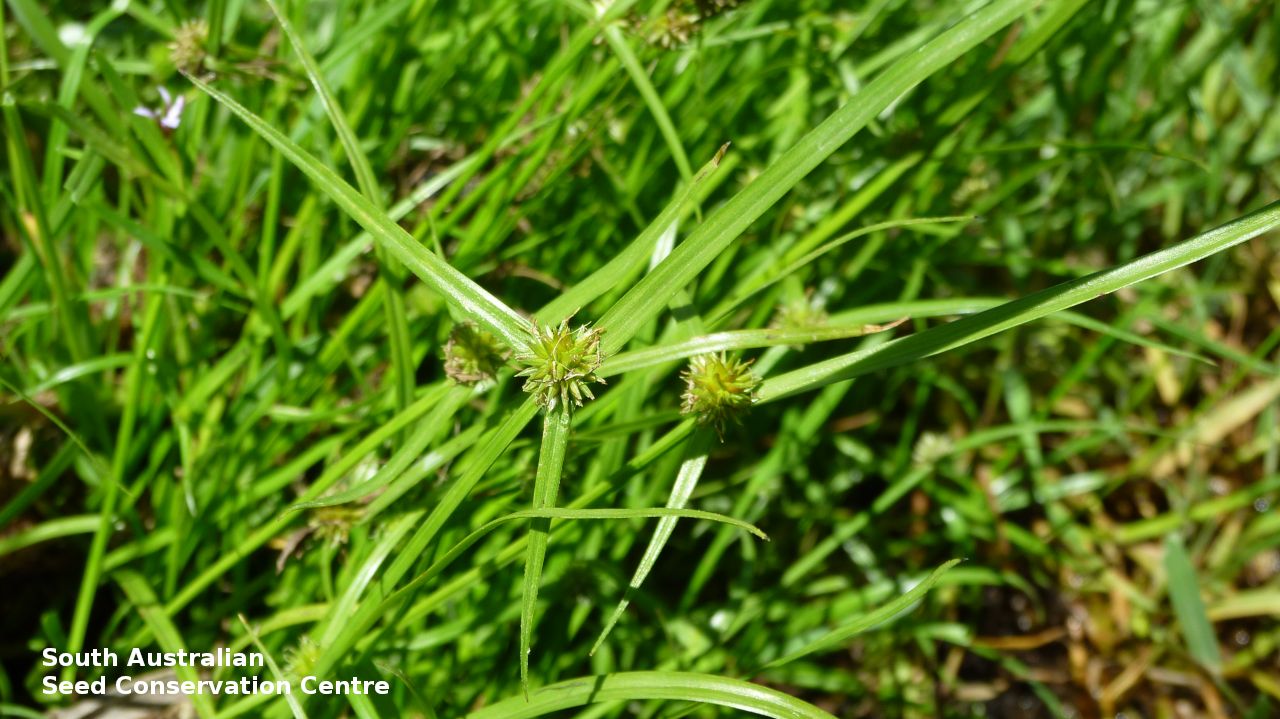
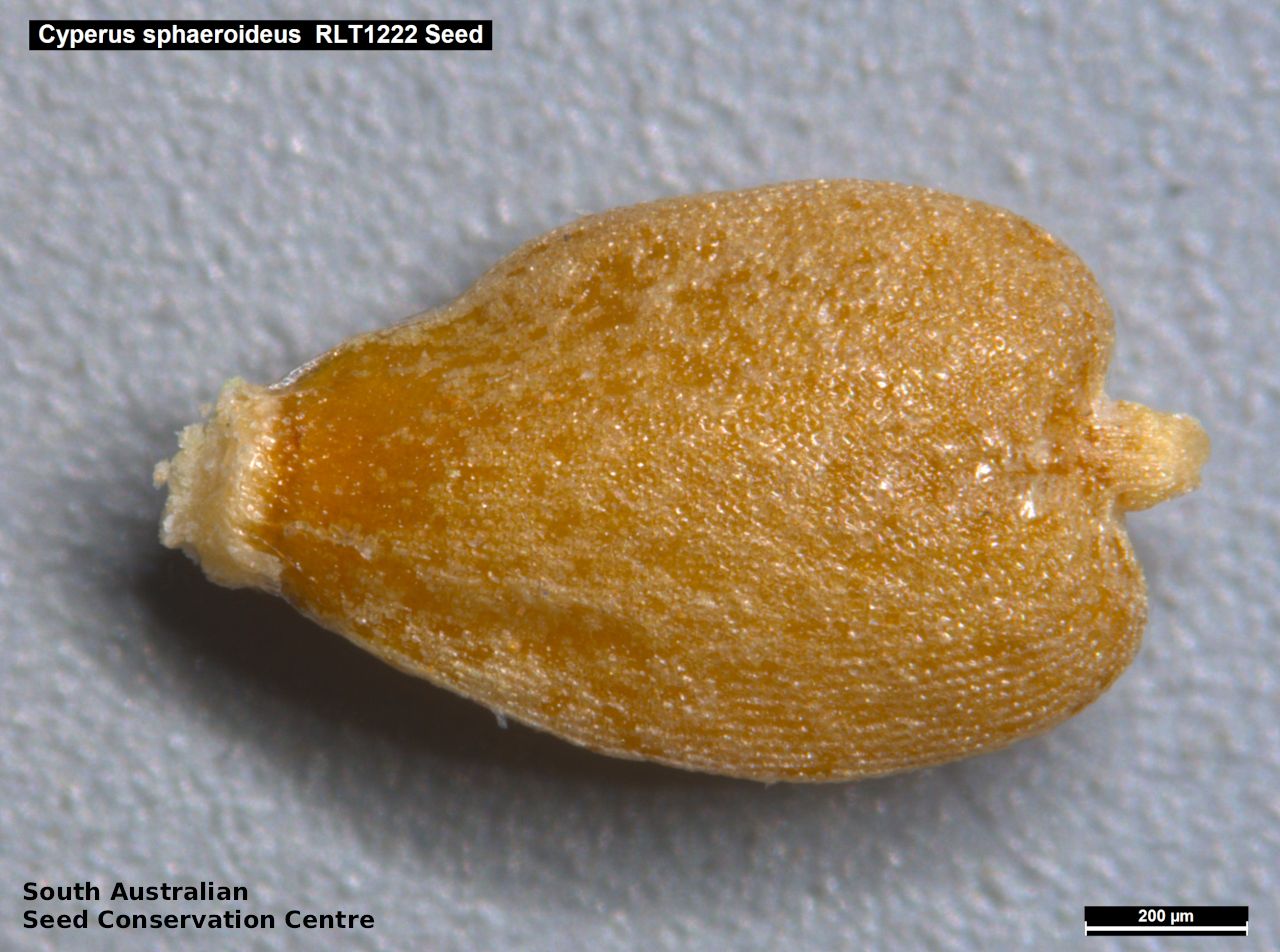
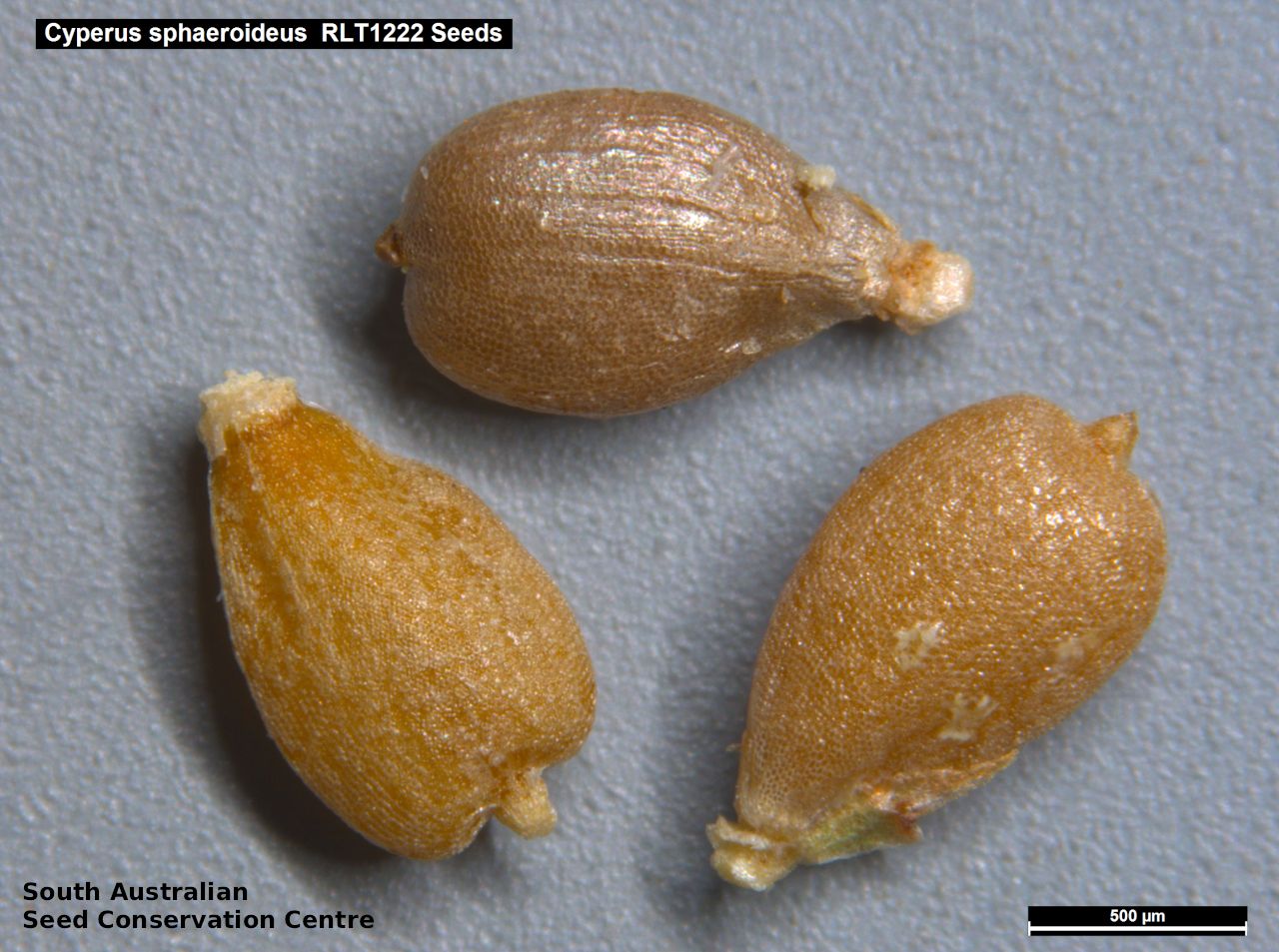
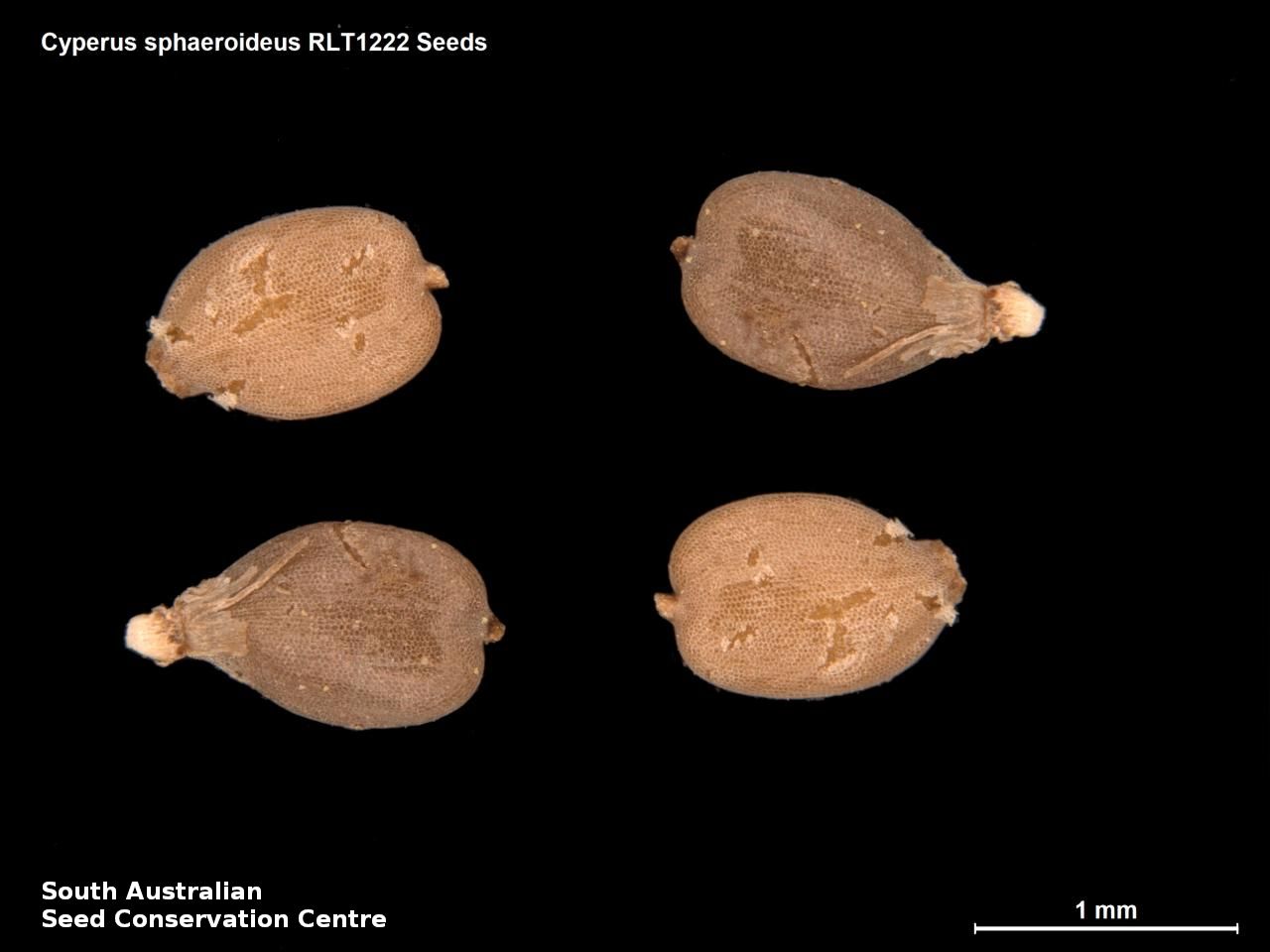
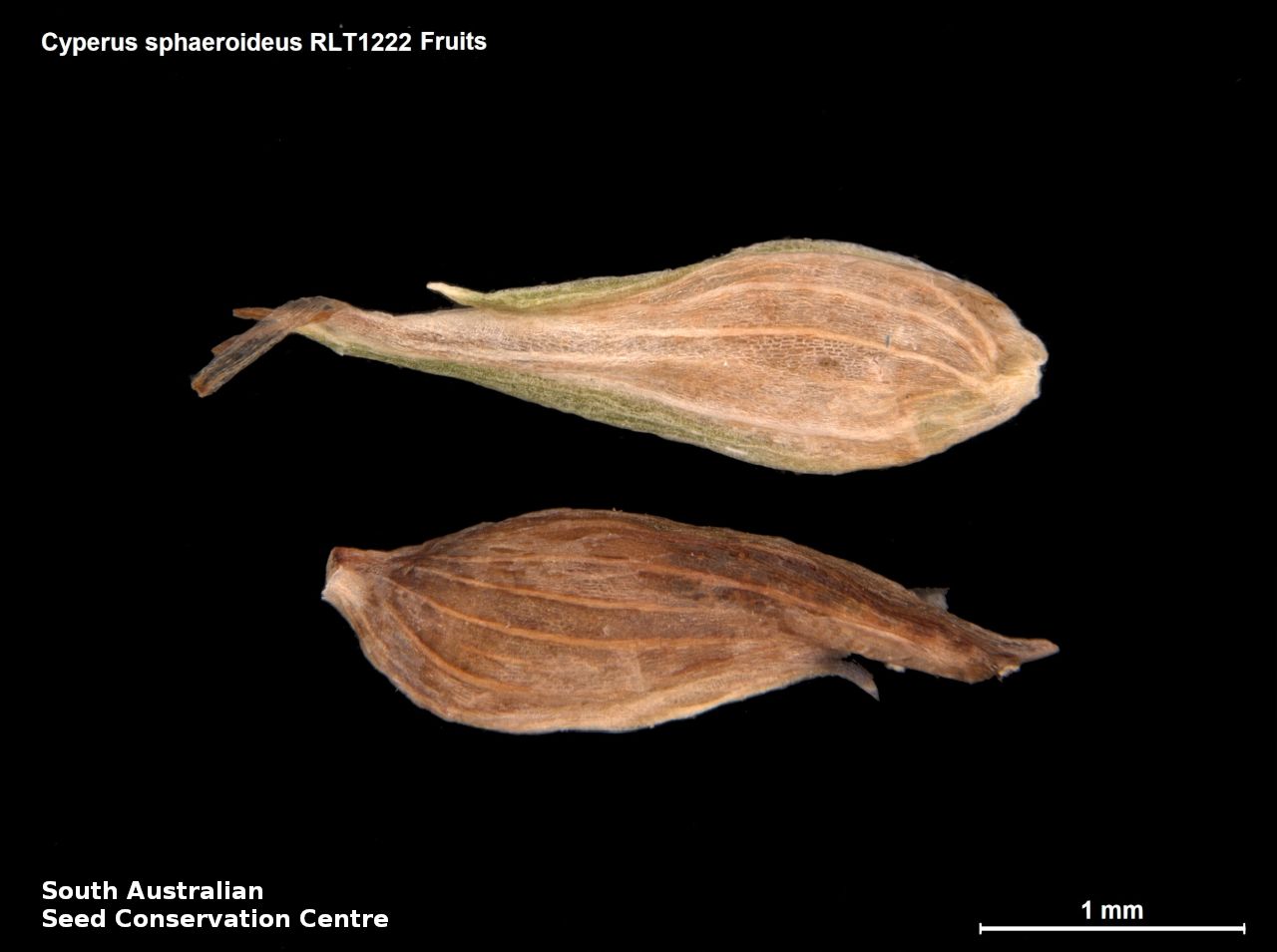
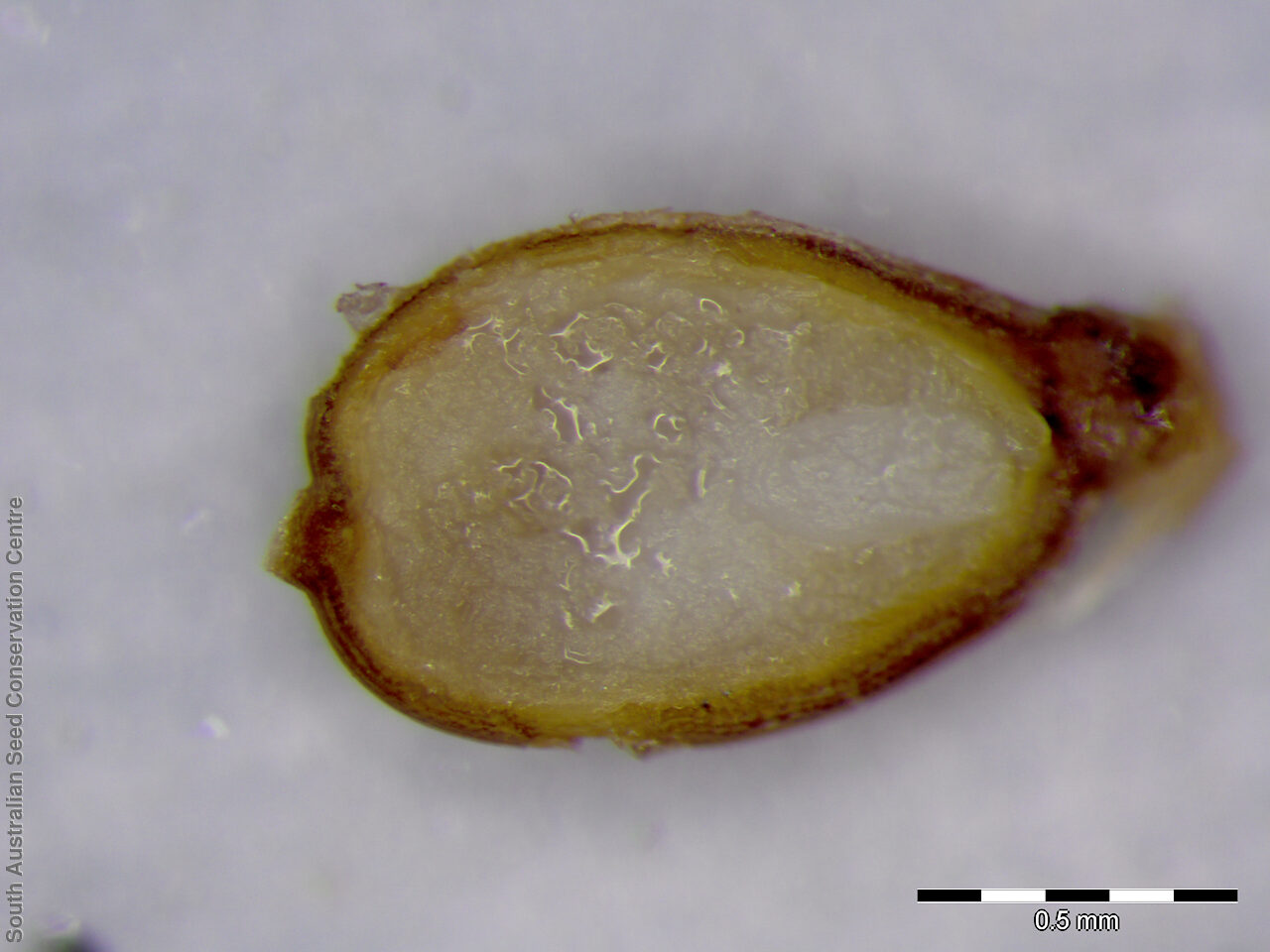
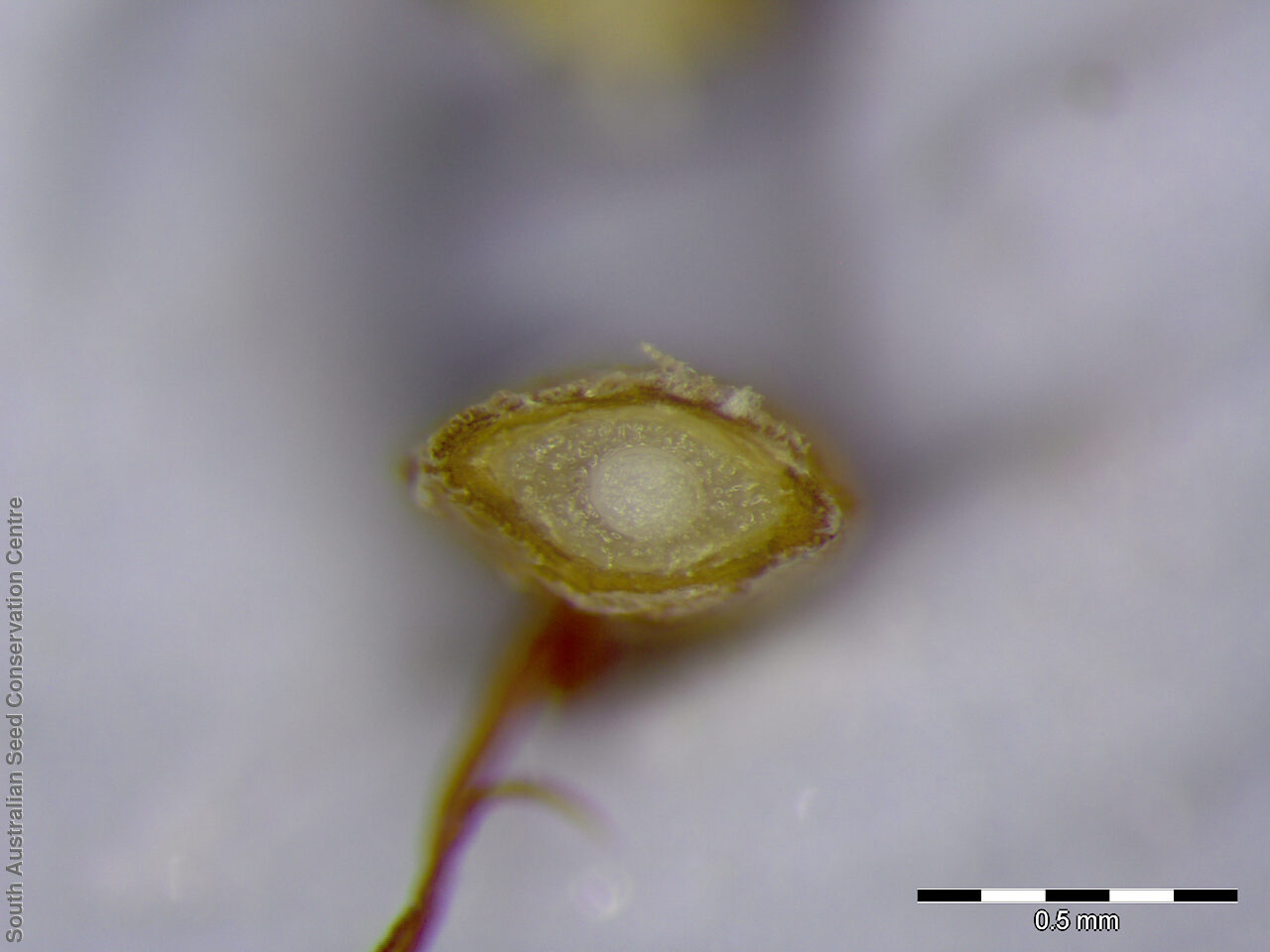


Etymology
Cyperus from the Latin 'cyperos' , derived from the Greek 'kypeiros', an ancient Greek name used by Homer and Theophrastus for several plants of this genus. Sphaeroideus meaning sphere-like, alluding to the shape of the flower.
Distribution and status
Found only in one area at Pomanda Point in South Australia growing on the margin flats of Lake Alexandrina. Also found in Queensland, New South Wales and Victoria. Native. Very rare in south Australia. Common in the other States.
Herbarium region: Murray
NRM region: South Australian Murray-Darling Basin
AVH map: SA distribution map (external link)
Plant description
Slender perennial sedge with long slender rhizome. Culms trigonous, smooth, to 50 cm high and 1 mm diameter. Leaves not septate-nodulose, shorter than culms, 2�3 mm wide. Flower-spike head-like, globose, always solitary, 4�7 mm diameter, involucral bracts leaf-like, 2�4 exceeding inflorescence. Spikelets flattened, from very few to 50 per head; glumes short-mucronate, with smooth or slightly toothed keel, with sides several-nerved, whitish to pale brown, often tinged golden, 2�3.5 mm long. Flowers in spring and summer. Fruits are brown globular fruit-head at tips of stems. Seeds are brown ovoid seed to 1.3 mm long and 1 mm wide, with a reticulate surface and covered in a thin whitish transparent layer. Seed embryo type is capitate.
Seed collection and propagation
Collect seeds between December and April. Collect fruits by picking off the mature heads, those turning red-brown colour and come-off easily. Place the heads in a tray and leave to dry for one to two weeks. Then rub the heads with a rubber bung to dislodge the seeds. Use a sieve to separate any unwanted material. Store the seeds with a desiccant such as dried silica beads or dry rice, in an air tight container in a cool and dry place. From one collections, the seed viability was high, at 100%.
| Location | No. of seeds (weight grams) | Number of plants | Date collected | Collection number Collection location | Date stored | % Viability | Storage temperature |
|---|---|---|---|---|---|---|---|
| BGA MSB | 2,200 (0.5 g) 1,500 (0.32 g) | 50+ | 16-Jan-2010 | RLT1222 Murray | 1-Jun-2010 | 100% | -18°C |
| BGA | 3,100 (0.62 g) | 100+ | 3-Apr-2012 | DJD2365 Murray | 1-Nov-2012 | 98% | -18°C |
Number of plants: This is the number of plants from which the seeds were collected.
Collection location: The Herbarium of South Australia's region name.
% Viability: Percentage of filled healthy seeds determined by a cut test or x-ray.